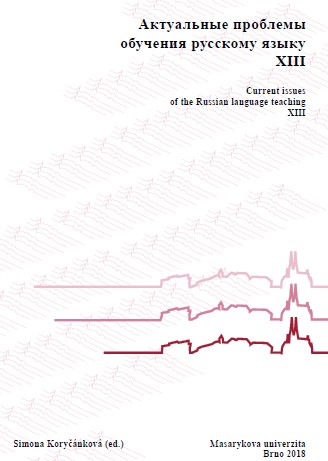КОММУНИКАТИВНАЯ ГРАММАТИКА Г.А. ЗОЛОТОВОЙ И СИНТАКСИЧЕСКАЯ ТЕОРИЯ ПРАЖСКОГО ЛИНГВИСТИЧЕСКОГО КРУЖКА
THE SYNTAX THEORY OF THE PRAGUE LINGUISTIC CIRCLE AND G.A. ZOLOTOVA’S COMMUNICATIVE GRAMMAR
Author(s): Iuliia Vasilyevna Rogovneva
Subject(s): Syntax, Comparative Linguistics, Western Slavic Languages, Eastern Slavic Languages
Published by: Masarykova univerzita nakladatelství
Keywords: The Prague Linguistic Circle; communicative grammar; speaker; communicative situation; predicative unit; text;
Summary/Abstract: The article presents the comparative analysis of the basic syntax Prague linguistic positions and of G. A. Zolotova’s communicative-functional grammar. The main ideas that characterize the Prague theory include attention to the function of language units, to the speaker, to the situation of utterance, recognition of the sentence as the main object of functional syntax. G. A. Zolotova’s grammar distinguishes the anthropocentricity, the unity of the form, the meaning and the function in language units and also the textcentricity. G. A. Zolotova repeatedly turned to the ideas of the PLC, in particular to the functional perspective statement, but they have not been a starting point for herself and her followers to date, so it can be argued that these theories, developed at different times and independently of each other, approach the question of the dependence of statements on the situation and the position of the speaker, the necessity of taking these parameters into account in the analysis from different sides. This same idea is developed in M. A. K. Halliday’s systemic-functional grammar. If V. Mathesius find the sentence as the main object of the functional grammar, nevertheless G. A. Zolotova (although she emphasizes the theory of sentences models and its modifications) find the text as the main object of the communicative grammar because the text is the language unit of highest level in which the speaker realizes his ideas and in which is interpreted the meaning of other linguistic units. The analysis of the theoretical positions in the article is accompanied by examples from Russian and Czech non-functional texts.
Book: Актуальные проблемы обучения русскому языку XIII
- Page Range: 364-370
- Page Count: 7
- Publication Year: 2018
- Language: Russian
- Content File-PDF

